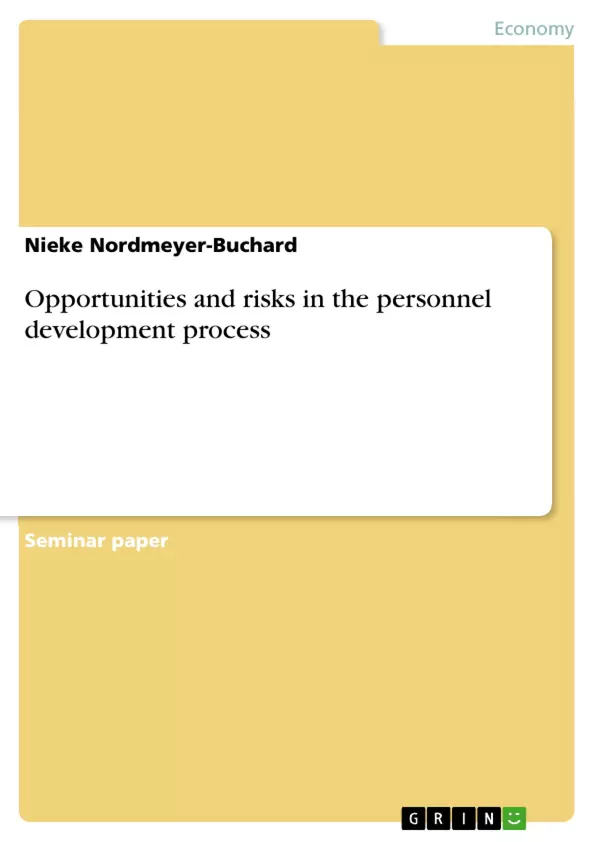The German economy has been growing continuously for the last 6 years. In terms of gross domestic product, Germany is the largest economy in Europe. In addition, the German economy as an export country benefits enormously from the regenerating global economy. The consequences are rising consumer spending by citizens and investments by companies. Globalization leads to new Challenges for companies that have to act under increasing competition and high pressure to perform. Accordingly, the demands on the staff who have to deal with technical innovations, for example, are increasing. In addition, employers have to deal with difficult conditions for the search for personnel.
Due to the stagnating birth rate in Germany, there is a scarce supply of skilled workers and qualified management personnel. In order to meet these new challenges, companies are increasingly focusing on human resource management. Now it not only includes personnel administration, which was initially understood as a subordinate and exclusively serving function, but also many other functions that deal with the employees of a company.
Personnel are no longer assigned to provide services alongside other production factors such as machines and raw materials, but are given a new status as the most important resource. Strategic tasks such as personnel planning, recruitment and deployment of human resources in the company's human resources management are now part of the overall corporate policy. Another task of the company's human resources department is responsible for personnel development, which in operational practice serves to promote and further develop employees with their skills and abilities. In addition, the personnel development between employers and employees as an interface to meet the needs and requirements of both parties.
Inhaltsverzeichnis (Table of Contents)
- I. Introduction
- 1.1 Definition of personnel development
- 2 The personnel development process
- 2.1 Phase 1: The personnel requirements analysis
- 2.2 Phase 2: The objective of personnel development
- 2.3 Phase 3: The conception of personnel development
- 2.4 Phase 4: Implementation of personnel development measures
- 2.5 Phase 5: Evaluation and transfer assurance
- 3 Opportunities and risks of different stakeholder groups of the personnel development process
- 3.1 Opportunities and risks of needs analysis
- 3.2 Opportunities and risks of the objective
- 3.3 Opportunities and risks of the conception
- 3.4 Opportunities and risks of implementation
- 3.5 Opportunities and risks of evaluation and transfer assurance
- 4 Recommendations for action in the context of reflection
Zielsetzung und Themenschwerpunkte (Objectives and Key Themes)
This work examines the personnel development process in companies, with a focus on the opportunities and risks associated with each stage. The goal is to provide a comprehensive overview of the process, highlighting key considerations for different stakeholder groups.
- Definition and Importance of Personnel Development
- The Phases of the Personnel Development Process
- Opportunities and Risks in Each Phase
- Stakeholder Perspectives on Personnel Development
- Recommendations for Effective Personnel Development Strategies
Zusammenfassung der Kapitel (Chapter Summaries)
- I. Introduction: This chapter introduces the concept of personnel development, highlighting its importance in the context of a rapidly changing global economy. It discusses the evolving role of human resources within companies and the need for effective personnel development strategies to address challenges such as skilled labor shortages and the need for continuous innovation.
- 2 The personnel development process: This chapter delves into the personnel development process, outlining its five key phases: personnel requirements analysis, objective setting, conception, implementation, and evaluation. Each phase is explained in detail, focusing on its significance and its potential impact on the overall success of the process.
- 3 Opportunities and risks of different stakeholder groups of the personnel development process: This chapter examines the opportunities and risks associated with each phase of the personnel development process from the perspective of different stakeholder groups. It analyzes how each phase can benefit or hinder the various stakeholders involved, including employees, managers, and the company as a whole.
Schlüsselwörter (Keywords)
Personnel development, human resource management, stakeholder analysis, needs analysis, objective setting, implementation, evaluation, opportunities, risks, recommendations for action, economic trends, global competition, skilled labor shortages, innovation.
- Quote paper
- Nieke Nordmeyer-Buchard (Author), 2018, Opportunities and risks in the personnel development process, Munich, GRIN Verlag, https://www.grin.com/document/1185790



